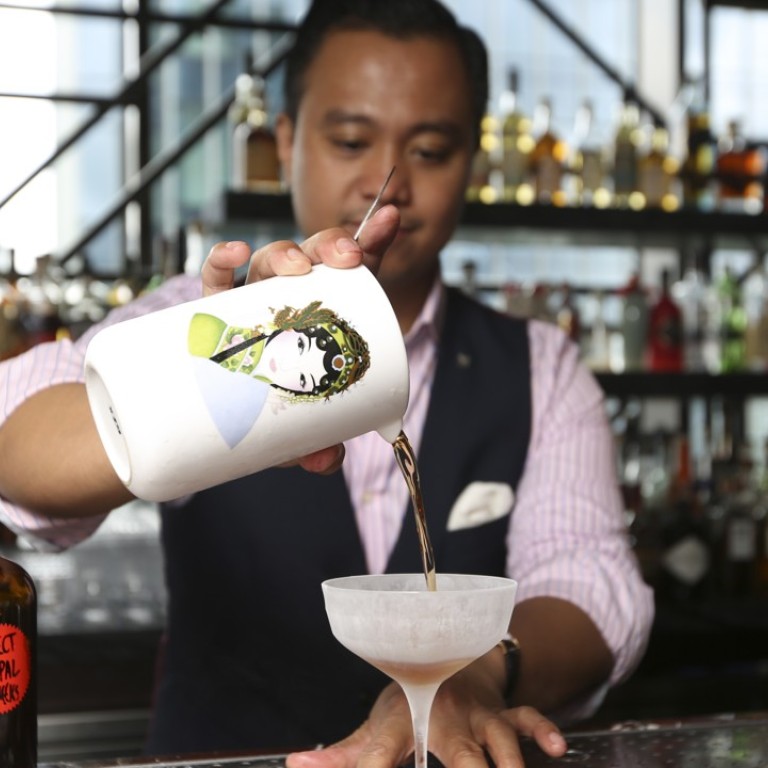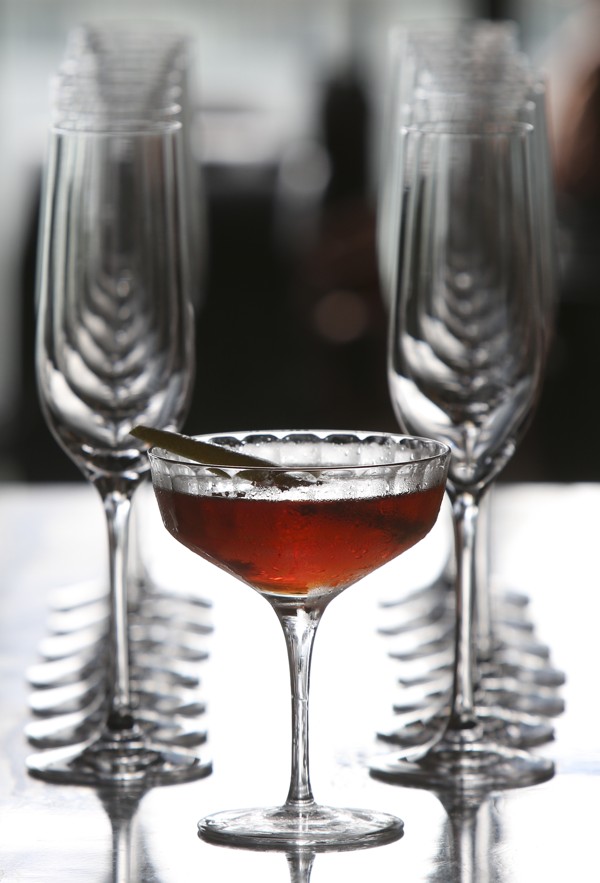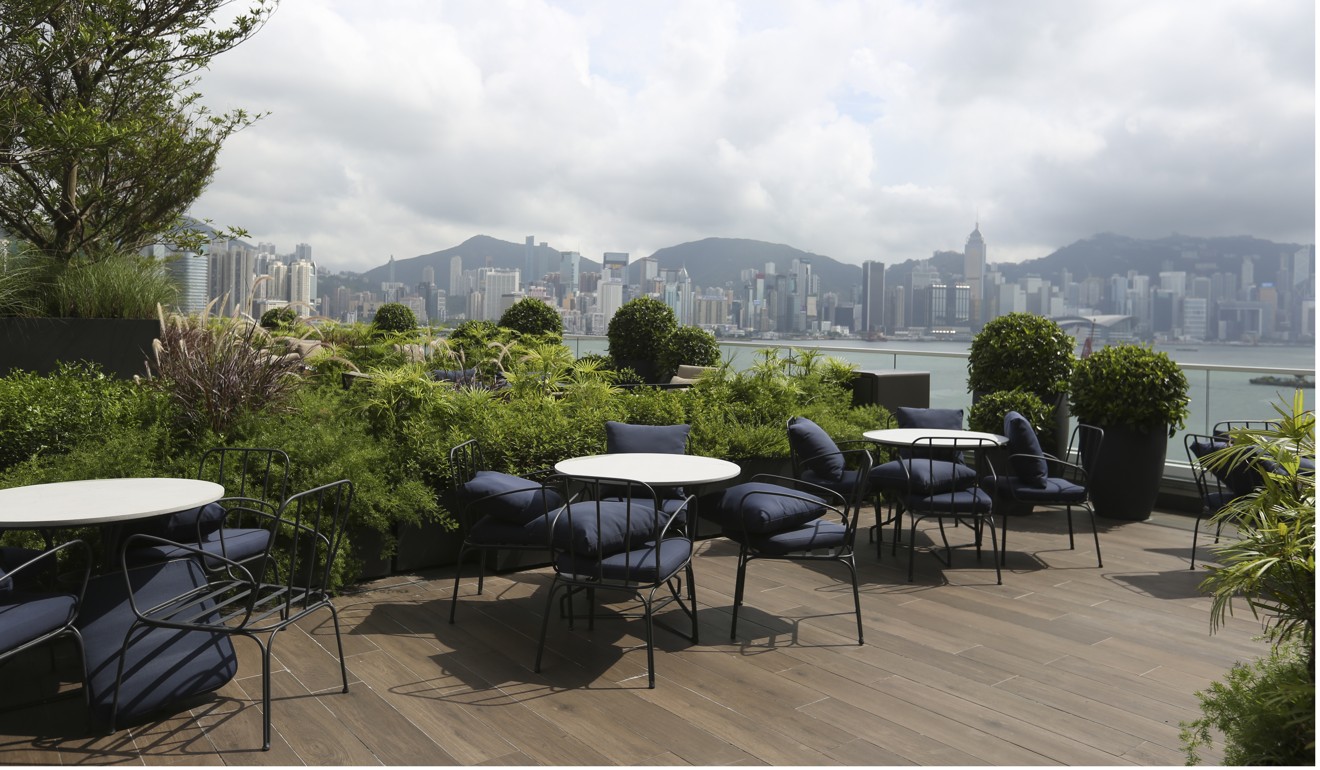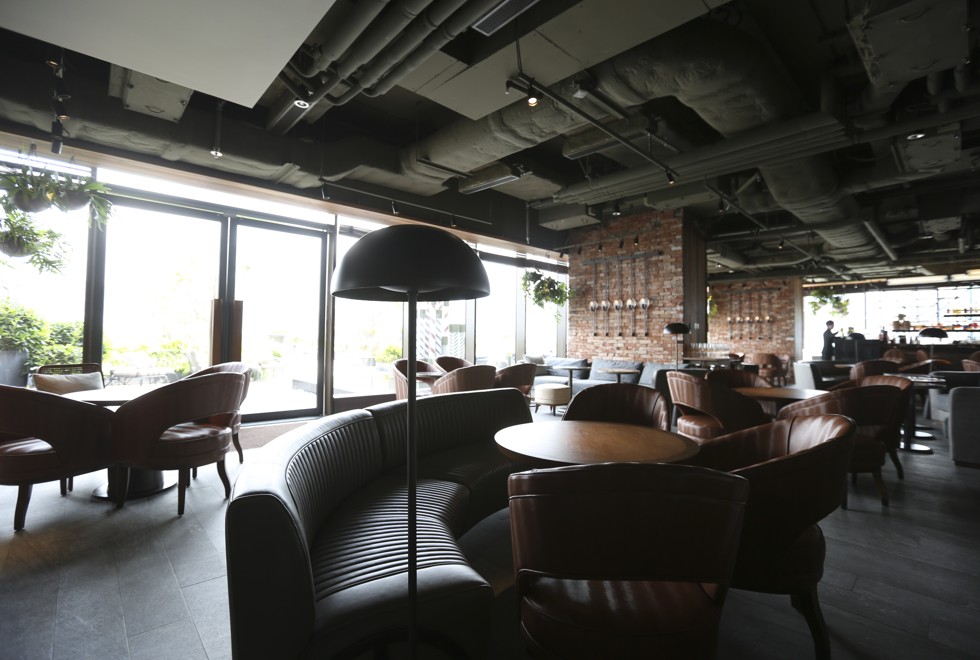
Barrel-aged cocktails all the rage in Hong Kong, and this barman’s perfected the art
Eight weeks for Negroni, three for Manhattan, four for Perfect Old Pal – through trial and errror, Joe Villanueva at Red Sugar in Hung Hom finds ideal time to age some classics in white oak
“People have been barrel ageing cocktails for some time, but nobody else was doing it in Hung Hom,” says Red Sugar bar manager Joe Villanueva.
That part of Hong Kong is indeed an unlikely place in which to seek out exemplars of modern mixology, but Red Sugar, in the Kerry Hotel, is certainly pointing the way.
A growing number of bars in more fashionable areas are trying to add another dimension to cocktails by exposing them, pre-mixed, to wood. Some particularly interesting drinks that have undergone the process can be found in Central at Zuma, in The Landmark, with its Zacapa solera system of connected barrels, and at the Mandarin Oriental’s M Bar, which has experimented with maturing cocktails in bamboo.

The original Old Pal is one of a number of cocktails first documented, if not necessarily first mixed, at Harry’s New York Bar, at 5 Rue Daunou, in Paris.
It is essentially a variation on the Negroni, with rye whiskey replacing the gin.
Proprietor Harry MacElhone gave the credit for the recipe to William Harrison “Sparrow” Robinson, one of the bar’s semi-resident characters during the interwar years.
A Scottish-born naturalised American who settled in the French capital at the end of the first world war, Harrison made his living as the “sporting editor” of the New York Herald Tribune’s Paris edition. The “Sparrow” nickname was a reference to his diminutive build.
For about two decades he wrote a “sporting gossip” column for the paper, and he became a famously well-connected expatriate. According to a history of Harry’s, published to mark its centenary, in 2011, he liked to boast that he had “met more Americans visiting France than the US Visa Department”.
He liked to file his copy from Harry’s in the early hours of the morning and, according to the bar’s lore, “no one ever saw him go to bed … or pay for his drinks”.
“Old Pal” was the honorific by which he greeted more or less everybody, hence the name of the drink, for which the original recipe was simply equal parts Canadian whiskey, dry vermouth and Campari, stirred. The original 1930 edition of the Savoy Cocktail Book repeats that recipe, but stipulates shake and strain rather than stir.
Over the years, American rye whiskey has largely superseded Canadian in mixing Old Pals, but the name remains the same.
That was the formula that Villanueva originally tried to age in his oak barrels, but rather than add depth and complexity the wood seemed to be taking something away.
“It was just too dry. The wood had extracted some flavour, so I thought I’d try it with sweet vermouth as well, and it worked,” he says.
The cocktail stays in the barrel for four weeks and the proportions of the ingredients have been slightly recalibrated. The Perfect Old Pal recipe is two parts rye whiskey to one part dry vermouth, one part sweet vermouth, and one and a half parts Campari.
Both the proportions and the ageing period were settled on after much experimentation. Of the other barrel-aged cocktails, the Negroni requires eight weeks while the Manhattan and Vieux Carré each get three.
“It’s called ‘Perfect’ because of the balance of sweet and dry. We use Michter’s Straight Rye, which is a beautiful rye whiskey. We tried different ones but for some reason this worked. We tried different vermouths as well, and the Cinzano 1757 emerged as the [best] ones.”

Although a few barrels are displayed in the bar, the cocktails are not served directly from them.
“We don’t do it straight from the barrel because you get bits of wood in the drink. It has to be strained into bottles which we then keep behind the bar,” explains Villanueva.
Red Sugar has gone with the routine of stirring with ice, rather than shaking, and serves the cocktail straight up in a coupe glass. Villanueva says this prevents the drink becoming over diluted, but the bar is happy to serve it on the rocks in an old-fashioned glass, if customers prefer.
The garnish is a simple strip of lemon peel, and zest is rubbed round the sides and the stem so the lemon scent from the oils transfers to the drinker’s fingers.
“It’s like the Italians drinking coffee with a bit of lemon zest. This contains Campari, which is a bitter agent, and the lemon zest helps to balance it in the same way it balances the bitterness in an espresso,” says Villanueva.
It’s worth the extra month in the barrel, and is an interesting choice for a Negroni drinker, of whom there are now many, interested in a drink with a little more body.


